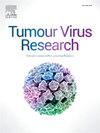Clinical performance of the SureX PCR HPV test versus hybrid capture assays (DH2/careHPV) in primary cervical cancer screening
IF 8.1
Q1 VIROLOGY
引用次数: 0
Abstract
Background
Evaluating novel human papillomavirus (HPV) tests in well-designed, population-based screening studies is essential for ensuring the benefits of cervical cancer screening.
Methods
8638 women aged over 25 years from China underwent HPV screening using a PCR-based full genotyping HPV assay (SureX HPV), alongside hybrid-capture HPV tests (DH2/careHPV) and cytology. Any abnormal results triggered colposcopy and biopsy if indicated. Screening performance was evaluated for detecting cervical intraepithelial neoplasia grade 2 or worse (CIN2+) and CIN3+.
Results
The high-risk HPV (hrHPV) positive rate by SureX HPV was significantly higher than by careHPV (11.0 % vs. 8.2 %, P <0.01) but similar to DH2 HPV (12.0 % vs. 11.5 %, P =0.34). The overall agreement rates between SureX HPV and careHPV/DH2 HPV were 93.5 % (Kappa=0.63) and 94.0 % (Kappa=0.71). For CIN2+ detection, SureX HPV showed not-significantly higher sensitivity than careHPV (91.2 % vs 82.5 %, P =0.18) but lower specificity (91.2 % vs. 93.1 %, P <0.01). Compared to DH2, SureX HPV demonstrated comparable sensitivity (95.7 % for both, P =1.0) and specificity (89.5 % vs. 90.2 %, P =0.21). Similar patterns were observed for CIN3+ detection. The area under the receiver operating characteristic curve (AUC) for the SureX HPV was similar to hybrid-capture HPV tests (P >0.05 for both) and significantly higher than the cytology (ASC-US+) test for CIN2+/CIN3+ detection (P <0.05 for both).
Conclusions
The PCR-based SureX HPV test demonstrated good concordance with well-validated hybrid-capture HPV tests in detecting hrHPV and CIN2+/CIN3+. Despite its slightly suboptimal specificity, SureX HPV could be an alternative in primary screening due to its full genotyping capability.
SureX PCR HPV检测与混合捕获法(DH2/careHPV)在原发性宫颈癌筛查中的临床表现
背景:在设计良好、基于人群的筛查研究中评估新型人乳头瘤病毒(HPV)检测对于确保宫颈癌筛查的益处至关重要。方法:来自中国的8638名年龄在25岁以上的女性使用基于pcr的全基因分型HPV检测(SureX HPV)、混合捕获HPV检测(DH2/careHPV)和细胞学进行HPV筛查。如果有任何异常结果,则需要进行阴道镜检查和活检。评估宫颈上皮内瘤变2级及以上(CIN2+)和CIN3+的筛查效果。结果:SureX HPV检测的高危HPV (hrHPV)阳性率显著高于careHPV (11.0% vs. 8.2%, P < 0.05),且显著高于细胞学(ASC-US+)检测CIN2+/CIN3+的阳性率(P < 0.05)。结论:基于pcr的SureX HPV检测在检测hrHPV和CIN2+/CIN3+方面与经过验证的混合捕获HPV检测具有良好的一致性。尽管其特异性略低于最佳水平,但由于其完整的基因分型能力,SureX HPV可作为初级筛查的替代方法。
本文章由计算机程序翻译,如有差异,请以英文原文为准。
求助全文
约1分钟内获得全文
求助全文
来源期刊

Tumour Virus Research
Medicine-Infectious Diseases
CiteScore
6.50
自引率
2.30%
发文量
16
审稿时长
56 days
 求助内容:
求助内容: 应助结果提醒方式:
应助结果提醒方式:


